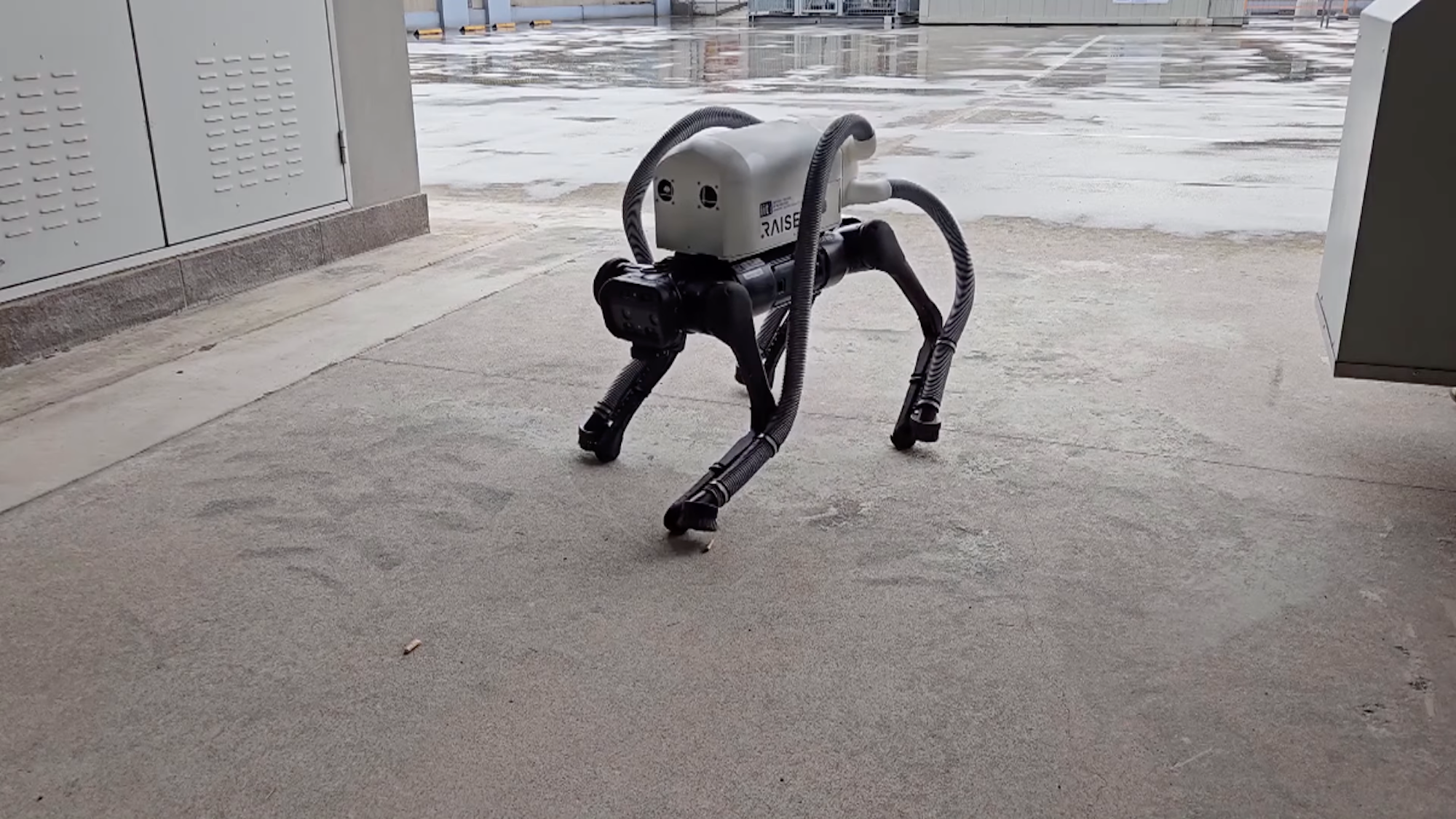Of the six million cigarettes annually smoked around the world, people toss an estimated 4 trillion butts somewhere other than ashtrays and trash bins. Given both their size and their general uncleanliness, the vast majority of the butts remain where they land. But even with most of its tobacco long gone, each remnant can contaminate the surrounding space with over 700 toxic chemicals.
Although the global number of smokers continues to decline, all those cigarette butts means society will be cleaning up the leftover mess for a long time. Any and all help would be greatly appreciated, which is what researchers at the Italian Institute of Technology (IIT) in Genoa had in mind when they designed their new hero, VERO.
Short for “Vacuum-cleaner Equipped Robot,” VERO includes what is by now a ubiquitous four-legged bot design (in this case, Unitree’s commercially available AlienGo unit) but with one important accessory—a vacuum worn like a backpack and paired with a nozzle for each foot. Created by roboticists at ITT’s Dynamic Legged Systems division, every vacuum tube on VERO is capped with a custom, 3D-printed nozzle to ensure it can get as close to the ground as possible without impairing its mobility.
Providing VERO with a vacuum upgrade is one thing, but training the robot to use it effectively is another problem entirely. In a paper published in April the Journal of Field Robotics, researchers describe first developing a neural network capable of interpreting visual data from VERO’s onboard cameras. As IEEE Spectrum explained on July 18, this system needed to be sensitive enough to pinpoint the trash amid cluttered environments, but also discerning enough to ignore any scanned duplicate targets. Once it identifies a cigarette butt, VERO then must calculate the best maneuvers to place one of its nozzle feet within suction distance while balancing itself using its other three limbs. Unlike many wheeled robots, VERO is intended to handle uneven terrain, stairs, and other similar obstacles, so it also must weigh the possibility of tipping over against how to properly suck up its cigarette butts.
[Related: A four-legged ‘Robodog’ is patrolling the Large Hadron Collider.]
According to its designers, VERO eventually managed a nearly 90 percent accuracy rate across multiple environment scenarios. Although not the fastest quadrupedal bot out there, its single minded determination and efficacy may make for a solid litter gathering machine—especially if researchers train it to tackle other trash. They also believe VERO may prove helpful for other jobs, including spraying weeds in farm fields, inspecting infrastructure integrity, and even attaching rivets or driving nails in construction projects.














/https://tf-cmsv2-smithsonianmag-media.s3.amazonaws.com/filer_public/d1/82/d18228f6-d319-4525-bb18-78b829f0791f/mammalevolution_web.jpg)






Discussion about this post